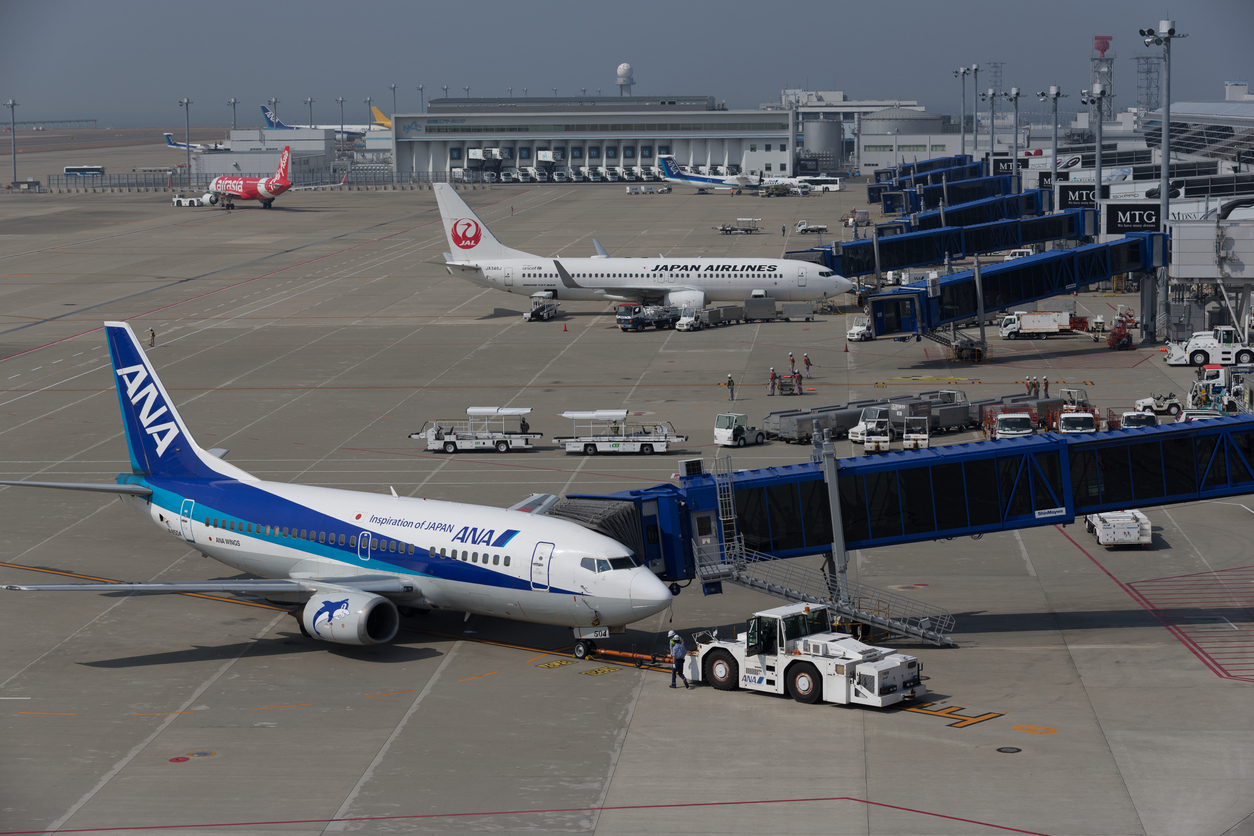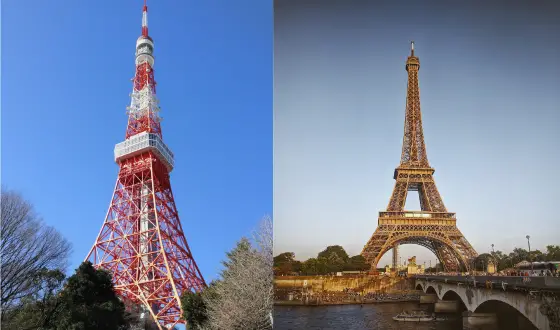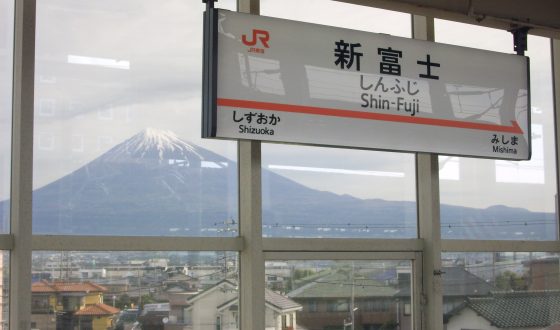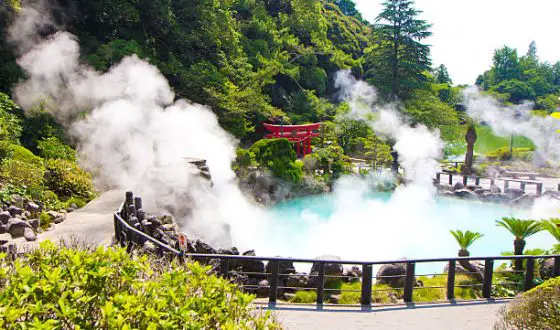Ultimate Guide On Major Airports in Japan
Japan, one of the most advanced countries, is a dream destination for many travelers around the world. To meet the rapid development of the tourism industry, the government of Japan has invested billions of dollars to increase the number and enhance the quality of airports here. It is no secret that Japan has some of the best airports in the world. These airports do not only have incredibly hi-tech and convenient services but also offer passengers various kinds of entertainment activities that can not be found anywhere else. In today’s blog, we will walk you through some major airports in Japan in this location guide.
Ultimate Guide On Major Airports in Japan
1. Basic things you need to know about airports in Japan.
1.1. Immigration stop
The immigration process here is similar to that in any country. If you plan the first international flight to Japan, do not panic. We will give you a short instruction of how to pass through airport security as following:
- Fill in a disembarkation form before going to immigration stop.
- Get in line and wait for your turn.
- Show the passport and disembarkation form to the officers
- Put your index fingers over a fingerprint reader for biometric screening.
- Look straight at the camera to take a photo
- The officers may ask a few questions about your trip so remember to prepare yourself carefully.

1.2. Baggage claim section
Once you pass immigration stop, make your way to the baggage claim area. Find your flight code on the baggage carousel board to identify which carousel will have your bags. Remember to check the tag on your bags. The information on this tag should match the information on your claim ticket. The baggage claim section may be the least reliable section in the airport as there is a possibility that someone may take your luggage by mistake. Hence, you would better be quick and make sure to check your bag carefully. Another thing is that you should check if any major damage happens to your bag. In this case, file a claim and report it to the airline as soon as possible.

1.3. Public areas
After taking your luggage, get through the security gate to enter public areas. Most Japan international airports are fully equipped with entertainment facilities and services so do not worry about getting bored when you have to spend a long time here. Here you can get free wifi access and use the free phone charging corners. Besides, there are money withdrawal and exchange services, luggage and postal services, hotels, facilities for children, health services, entertainment, dining, etc…

Read more:
1.4. Transportation to get to the city center
It is no exaggeration to say that Japan has one of the most advanced and comfortable transport network. You can easily get to city center from any airport in Japan by bus, taxi, or train.
Check the links below for details:
- How to get from Kansai Airport to Osaka& Tokyo
- How to get from Haneda Airport to Tokyo
2. Quick glance at top 5 Major international airports in Japan
2.1. Tokyo International Airport – HND
Tokyo International Airport (HND), located in the Ota area, Tokyo, is one of the largest and busiest airports in the world. As a major international airport in Japan, Haneda Airport annually serves approximately 80 million passengers with about 900 flights per day.
Currently, there are 3 terminals in Haneda Airport. Terminal 1 and Terminal 2 were designed to handle domestic flights while Terminal 3 is used for international flights. If you want to transfer between domestic terminals and the international terminal, you will need to take the airport’s free shuttle bus (every 5 minutes). Besides, transit passengers can also use monorail or Keikyu Railway for free if they get a special transit pass at the information counter.
Known as the best Japan international airport for multiple years, Haneda International Airport offers passengers a lot of dining, shopping and entertainment options. These include monetary services, medical services, massage, dining and shopping areas, etc.
From here, you can take a train, monorail or bus to Tokyo station, Shinjuku station or Shibuya station to get to Tokyo center.
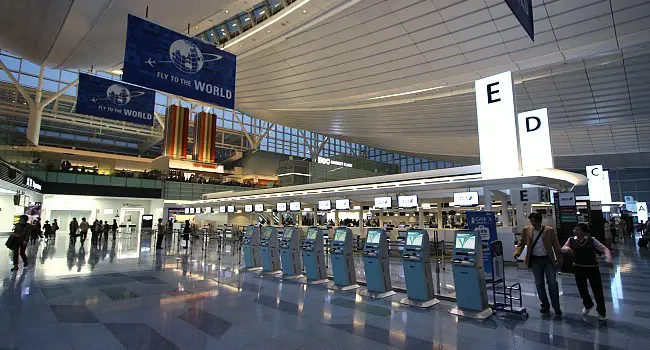
Tokyo International Airport (HND), located in Ota area, Tokyo, is one of the largest and busiest airports in the world.
2.2. Itami Airport (ITM)
Itami Airport, formally known as Osaka International airport, is one of the major airports in Japan. Although it is called Japan international airport, with the completion of Kansai airport in 1994, Itami airport has now only served domestic air traffic.
The airport is a single building of 21 gates and is divided into the area of the North Terminal (North Terminal) and the South Terminal (South Terminal). In particular, the North station serves flights of Japan Airlines and Amakusa Airlines while the Southern terminal serves mainly flights of All Nippon and Ibex Airlines.
Similar to other airports in Japan, Itami Airport also provides passengers with a lot of comfortable services.
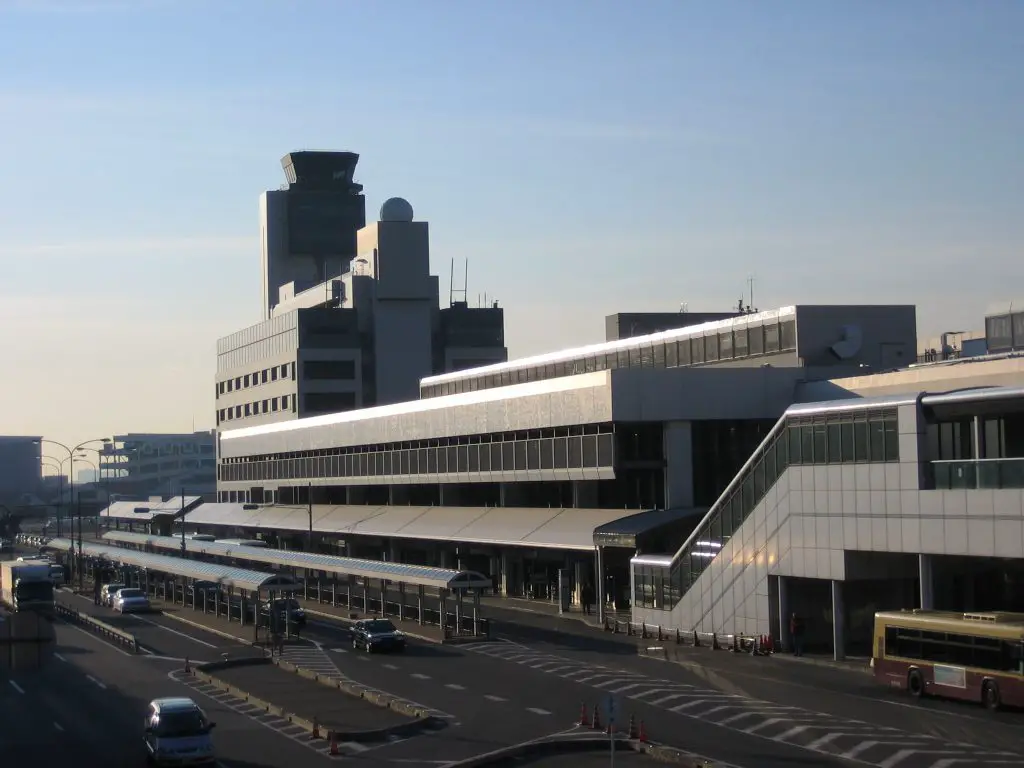
Itami Airport, formally known as Osaka International airport, is one of the major airports in Japan.
2.3. Narita International Airport (NRT)
Located in Chiba Prefecture, Narita Airport is one of two airports in Tokyo. It ranks 2nd on the list of major airports in Japan and always on top 50 busiest air freight hubs in the world for almost 20 consecutive years. While Haneda has a larger domestic traffic percentage, Narita is the main international gateway in Japan. It plays a significant role in boosting Japan’s tourism. Currently, Narita International Airport is the main hub of major airlines including Japan Airlines, All Nippon Airways, Nippon Cargo Airlines.
Similar to Haneda, Narita has 3 terminals. Terminal 1 includes the central building, the north wing building and the south wing building. Terminal 2 is a 5-storey building. Meanwhile, the new terminal 3 was put into use in April 2015 for low-cost airlines.
At this airport, passengers also receive many comprehensive utilities such as free wifi, ATM, banking services, currency exchange, child care facilities, fun entertainment activities,… Moreover, there are special cultural activities which you can not find anywhere else in the world.
From Narita, you can have various transportation options to enter Tokyo central. Here are some suggestions for you:
- JR Narita Express (NEX) is considered the best choice for access to Tokyo. With an affordable price of 3000 yen, passengers can have a comfortable 1-hour ride to the city center.
- Keisei Skyliner: Another convenient option is Keisei Skyliner. The price is around 2500 yen.
- Limousine bus: This is the most economical option with just about 900 -3200 yen (approximately 1 hour)
- Taxi: It will cost you around 20000 yen for a 60 – 90 minutes trip to get to Tokyo central.
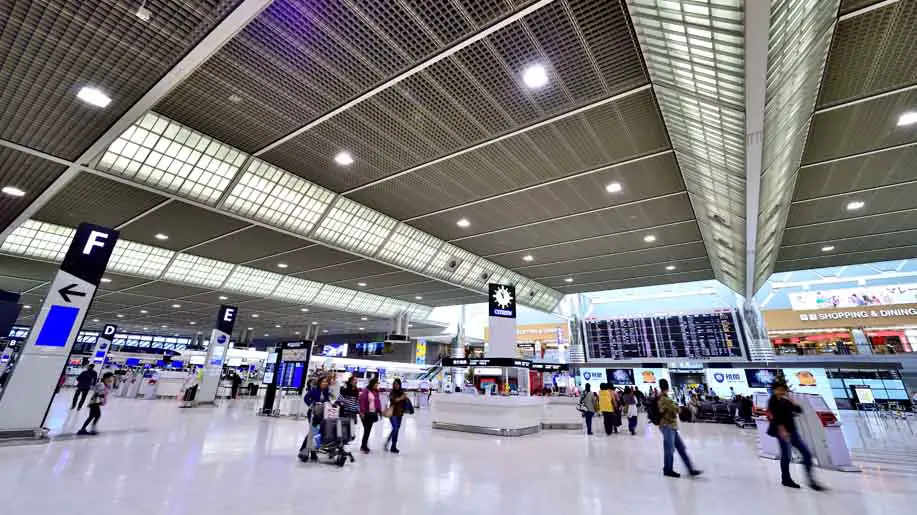
Located in Narita city, Chiba Prefecture, Narita Airport is one of two airports in Tokyo
2.4. Chubu Centrair International Airport (NGO)
Located on an artificial island in Ise Bay, Tokiname City, Achi Province, Chubu Centrair Airport is also one of the major airports in Japan. Airlines currently operating here are Vietnam Airlines, Korean Airlines, China Airlines, Philippine Airlines, Singapore Airlines, …
Chubu Centrair airport has a T-shaped terminal and is divided into two areas. The northern region handles domestic flights and the southern area serves international flights. At each station area, there are ticket counters, security checkpoints, baggage carousels and facilities for passengers.
In addition to basic services such as free internet, currency exchange, duty-free shopping, etc., Chubu Centrair Airport also has a very comfortable bathroom area. Here visitors can see the aircraft taking off and landing while relaxing in a comfortable hot bathtub. It is a very interesting experience that you should not miss while spending time here.
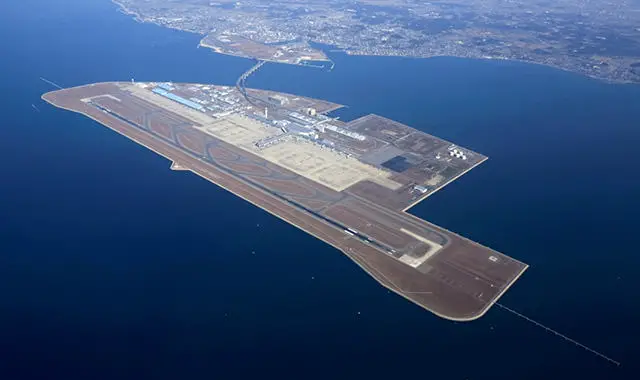
Located on an artificial island in Ise Bay, Tokiname City, Achi Province, Chubu Centrair Airport is also one of the major airports in Japan
2.5. Kansai International Airport (KIX)
Kansai International Airport, opened in 1994, is also one of the largest international airports in Japan. It is located on an artificial island in Osaka Bay. Since 1994, it has been one of the busiest airports in Japan, serving more than 300,000 passengers a week, welcoming 55,000 flights a year.
Kansai International Airport has become one of the most magnificent structures of the 20th century. There are 2 terminals in Kansai airport. Terminal 1 is the main station with 4 floors. It is claimed to be the longest station in the world with a total length of 1.7 km, as of 2008. This terminal is shaped like an airplane. This is a destination for domestic as well as international flights. Terminal 2 serves low-cost airlines.
The most outstanding service here is that depending on the weather, visitors can get close to the planes parked on the runway and watch planes take off and land. Moreover, there is a tour to explore the process of food preparation on the airplane. The tour starts from 11:00 and 11:30 on Wednesdays. In addition, visitors can choose the 30-60 minute airport museum tour.
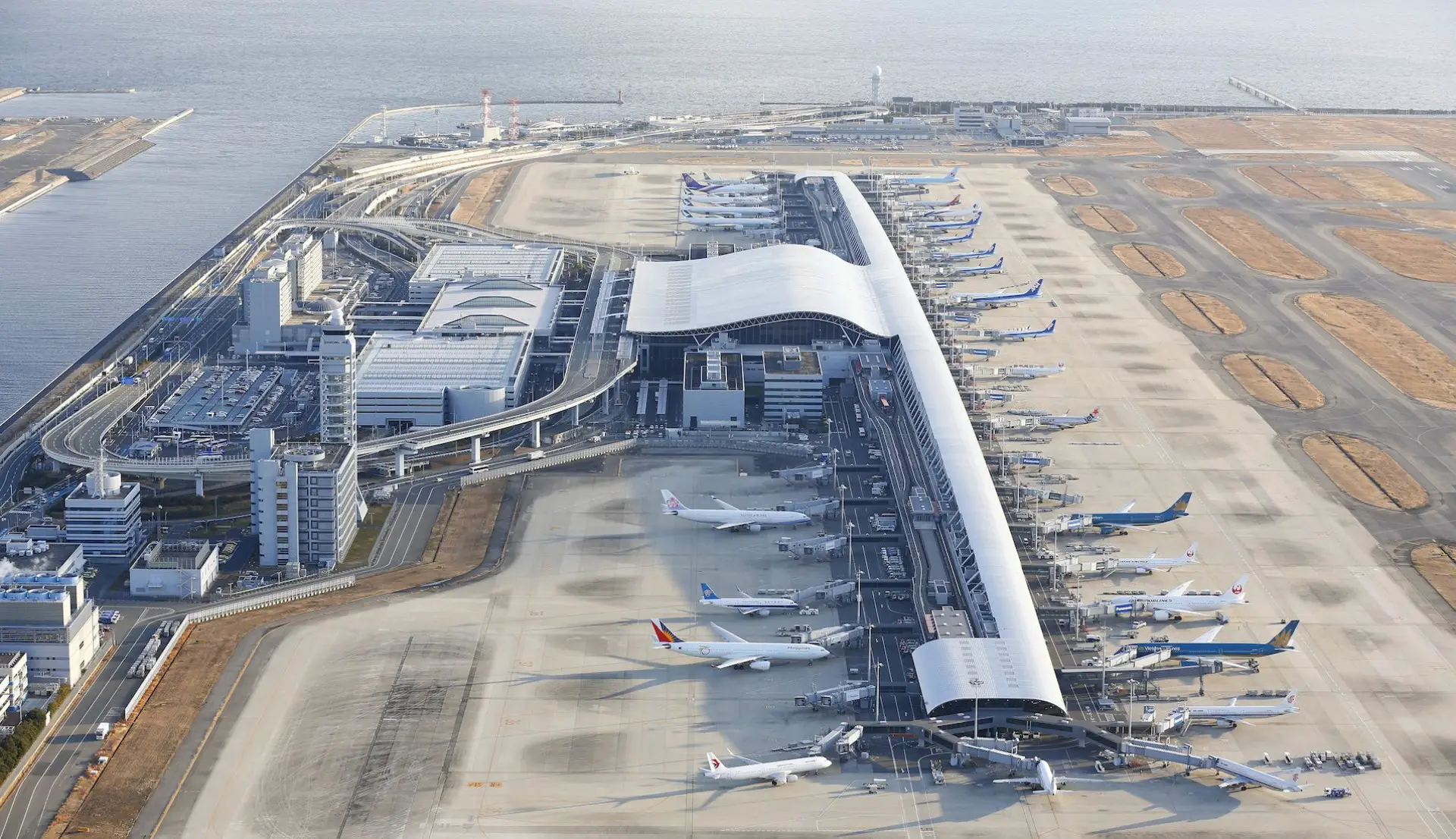
Kansai International Airport, opened in 1994, is also one of the largest international airports in Japan
Conclusion
Hopefully, after reading this blog, you can have some basic understanding of major airports in Japan. So what is your opinion about these airports? Are they better than the airports in your country? Please feel free to share your thought in the comment section below.

